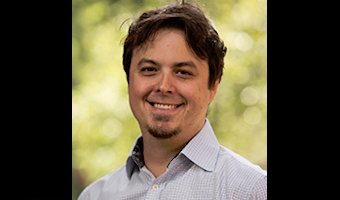The Institute of Nuclear and Particle Physics (INPP) presents Michael Paolone, of Temple University, on “The Coulomb Sum Rule in Nuclei” on Tuesday, Oct. 3, at 4 p.m. in Edwards Accelerator Lab, Roger W. Finlay Conference Room.

Michael Paolone
Abstract: Since the discovery of the European Muon Collaboration (EMC) effect, where it was observed that the quark longitudinal momentum distributions in a nucleus are different from those of free nucleons (protons or neutrons), there has been a long standing question in nuclear physics as to how the structure of a free nucleon might change when bound in a nucleus or embedded in a nuclear medium. Many different experimental results have suggested the presence of modification, but interpreting those results in the presence of many competing nuclear effects can be complicated. One of the cleanest signatures of in-medium modification can be achieved by testing the Coulomb Sum Rule through quasi-elastic electron scattering; where one counts the expected total nuclear charge by integrating the longitudinal response function of the nucleus and comparing it to the incoherent sum of electric form factors of the constituent nucleons. Standard nuclear effects that quench the charge response of the nucleus are well understood, leaving any additional quenching to be interpreted as a signature of medium modification. New preliminary experimental results from Hall-A at the Thomas Jefferson National Accelerator Facility will be shown.



















Comments